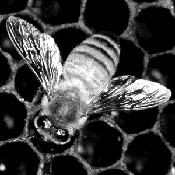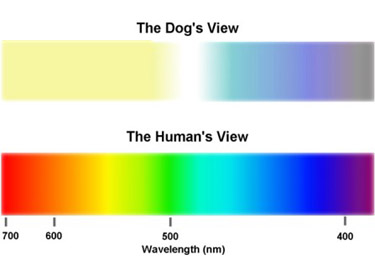Do You See What I See?
| This is obviously a... |
But can you guess what this is? |
 |
 |
Surprise! It's still the same bee. "How can it be the same bee?," you ask. Well, suppose for a moment that you are a worker bee. Your primary responsibility as a worker bee is to go out and find flowers with all the other worker bees. To know where the flowers are you not only have to recognize another bee from your hive, but also be able to watch its movements which tell you where all the flowers are. The problem is you don't see a bee the same way a human does. That's because your eye is actually a compound eye made up of literally hundreds of single eyes, each with its own lens and each looking in a slightly different direction. The bee's brain processes all of the images that the eye sends to it. This is the way that a bee visually interprets its world.
Does a bee see a bee as a me sees a bee? Not exactly. That's because the bee sees infra-red light waves being reflected off of the surface of the object at which it is looking. Humans cannot detect infra-red light waves with the naked eye.
Dogs also have different kinds of vision from humans. Although it was once thought that dogs could only see in black and white, this is untrue. They do, however, have a restricted ability to see the whole visible spectrum. This is thought to be due to the fact that dogs were primarily nocturnal animals before they were domesticated and so color perception was not so necessary.

Despite the differences, the vision of humans, bees and dogs all developed to respond most favorably to their particular environment. Most of the light on Earth comes from the Sun. If our nearest star was much hotter or brighter, or our planet was in a two-star system, then our eyes might have developed quite differently.